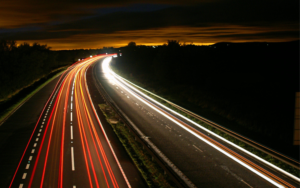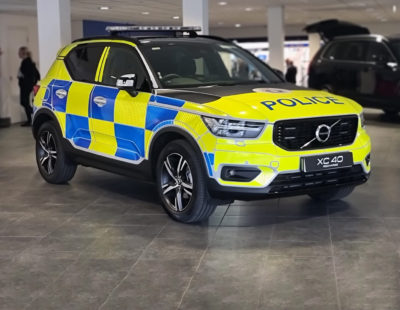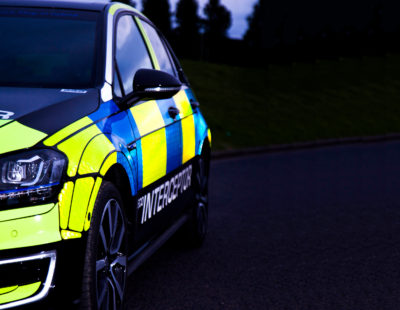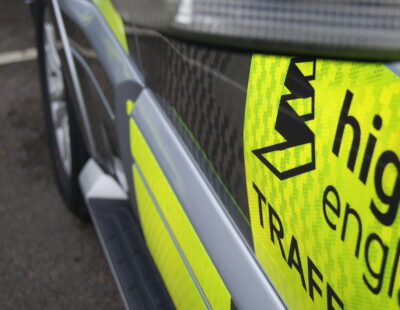Police cars need to be highly visible at all times. Not only is this key to the safety of all road users and police occupants but it also increases public awareness of the police force. But what are the guidelines when it comes to police car livery, and what are the best materials to use?
Lakeside Group combines industry excellence with exceptional customer service to provide emergency service vehicles all over the country with durable high quality products. With over 30 years’ experience in the traffic industry, we’re committed to making roads safer for all.
In this blog, we provide a detailed overview of the requirements for UK police car livery.
What is UK police car livery?
UK police cars utilise a distinctive vehicle livery to ensure they remain conspicuous in all conditions and at all times of the day and night. The markings were developed by the Home Office Scientific Development Branch, approved by the Association of Chief Police Officers, and became the accepted national standard in 1998.
For most police vehicles, the livery comprises rear chevron markings and side battenburg markings in blue and fluorescent yellow. These patterns are created using reflective materials which enhance visibility by returning the majority of the light that hits the vehicle back to the source.
Police cars also typically feature a force identifier or crest, vehicle fleet number, roof markings to aid with aerial identification by CCTV or aircraft, and POLICE lettering in block capitals in a typeface similar to British road signs.
Find out more about Battenburg livery markings >
UK police car livery guidelines
To ensure police cars are immediately identifiable, it’s important that forces across the country follow the same livery guidelines. The exact markings required by police cars differ depending on the type of vehicle in question.
Motorway and trunk road patrol vehicles
All police cars that conduct motorway and trunk road patrol duties as well as armed response vehicles use full battenburg markings for their vehicle livery. The exception to this rule is in situations where vehicles need to be unmarked, such as covert operations. Full battenburg comprises alternating blocks of fluorescent yellow and blue reflective material and provides visibility of up to 500m. These vehicles also utilise a rear chevron pattern in fluorescent yellow and fluorescent orange.
All other response vehicles
Half battenburg should be used by all other response vehicles patrolling and responding in urban and suburban locations where 200m visibility is sufficient. A slightly different livery is used on these police cars because it has been found that half battenburg is more easily identifiable in environments that are visually cluttered. Other than this distinction, these police cars will include the same markings as motorway/trunk road patrol vehicles. These include the rear chevrons, force identification markings, roof markings, and POLICE lettering.
Importance of police car livery
For any police vehicle, a highly distinctive and conspicuous livery is of paramount importance. Here are some of the key reasons why.
Safety
Police cars may be moving at speed, dealing with incidents on busy roads and carriageways, and parking in unexpected places. That means they need to be highly conspicuous at all times so that they can be discerned well in advance and other drivers can take the appropriate action. The reflective vehicle livery utilised by police cars is therefore crucial for protecting the safety of officers and other road users, and preventing any accidents.
Vehicle Safety Products from Lakeside Group >
Visibility
A unified police car livery allows police vehicles to be immediately identified as such wherever they are in the country. This contributes to high visibility policing, a strategy which aims to deter crime via the proactive presence of the police – particularly in urban areas. High visibility policing also helps to reassure the public that there are police nearby ready to respond if necessary, boosting public perceptions of the forces.
Protection
Often, police cars are used to guard and preserve the scene of an accident or crime to ensure the continuity of evidence. At night or in poor conditions, this livery ensures other road users and pedestrians can identify the situation well in advance and avoid the obstacle accordingly.
Pursuit
Police cars responding or pursuing the perpetrator of a crime need to make their way through traffic quickly. For that reason, it’s crucial other road users can identify police cars well in advance and move out of the way. This ensures the police vehicle is allowed to travel freely through even busy urban areas and get where they need to be as quickly as possible.
Reflective materials for police car livery
When it comes to the materials used for police car livery, high reflectivity is important. Avery Dennison’s VisiFlex V-8000 is a prismatic vinyl capable of providing the highest levels of visibility in all the colours required to create police car livery. Beyond reflectivity, VisiFlex V-8000 is also highly durable, resisting bruising and dirt and water ingress due to its single layer construction. As a result, it offers high performance throughout the service life of the vehicle.
To find out more about how VisiFlex V-8000 performs when it matters most, read our case study.
Quality assured police car safety markings from Lakeside Group
Lakeside Group is a trusted supplier of Avery Dennison’s ultimate answer to emergency service vehicle reflective – VisiFlex V-8000. This innovative material provides exceptional levels of reflectivity and remains looking as good as new for years to come. For a fully compliant solution to police car livery, you can count on us to deliver.
Furthermore, when VisiFlex V-8000 is purchased via one of our approved converters, we will extend the warranty period for all colours to seven years.
Find out more about our approved converter scheme by visiting: https://www.lakesidegroup.co.uk/products/approved-converter-accreditation-scheme/. Contact us to find out more.
Read more: A Buyer’s Guide to Reflective Material for Vehicles
Read more: What is Vehicle Livery? Everything You Need to Know About Reflective Vinyl for Vehicles




